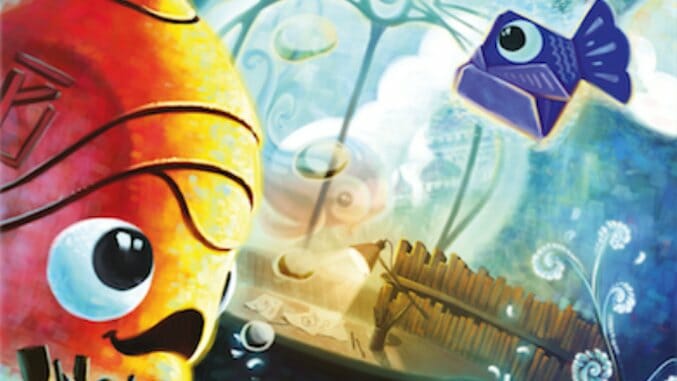Aquarium is a Pretty but Harsh and Unbalanced Boardgame

Aquarium is new to the English-speaking boardgame world, having previously had a limited release in Poland in 2011 without finding a broader audience. It’s a pretty game, with bright and often fantastical artwork with a theme that appears light, but the gameplay is harsh and unbalanced, making it a game without an obvious market.
In Aquarium, players compete to buy fish from the central “pet store” to fill their own aquariums, and score points by collecting sets. The collectible fish come in four colors and three sizes (measured by 1 to 3 stars), so players can collect by color, getting all three sizes for a set, or by size, getting one fish of each color in that specific size. This seems straightforward enough, but to buy from the pet store, you must buy all of the fish on display at once, so the cost can become an obstacle rather quickly. On a turn, you must either buy or pass; if you pass, you get two coins, which won’t get you very far toward your goal of filling your aquarium.
You also need money to feed your fish, which happens four times during the game, including the final feeding before players add up their points. The amount of food required to keep one fish alive at each feeding is equal to a number from 1 to 3, drawn randomly from a set of four cards (1, 2, 3, and 3, so, best of luck, pal), times the size of the fish. So if you buy a 3-star fish in early in the game and have to feed it four times, you could end up spending 36 coins to feed it.
The way around that is to buy plants, which cost two to three times as much as fish do but allow you to feed one fish per plant at each feeding. You can also get points for collecting a set of the three different plant types, although the face value of those three plants is 24 coins, a lot in a game where you’re constantly short of cash.
-

-

-

-

-

-

-

-

-

-

-

-

-

-

-

-

-

-

-

-

-

-

-

-

-

-

-

-

-

-

-

-

-

-

-

-

-

-

-

-









































